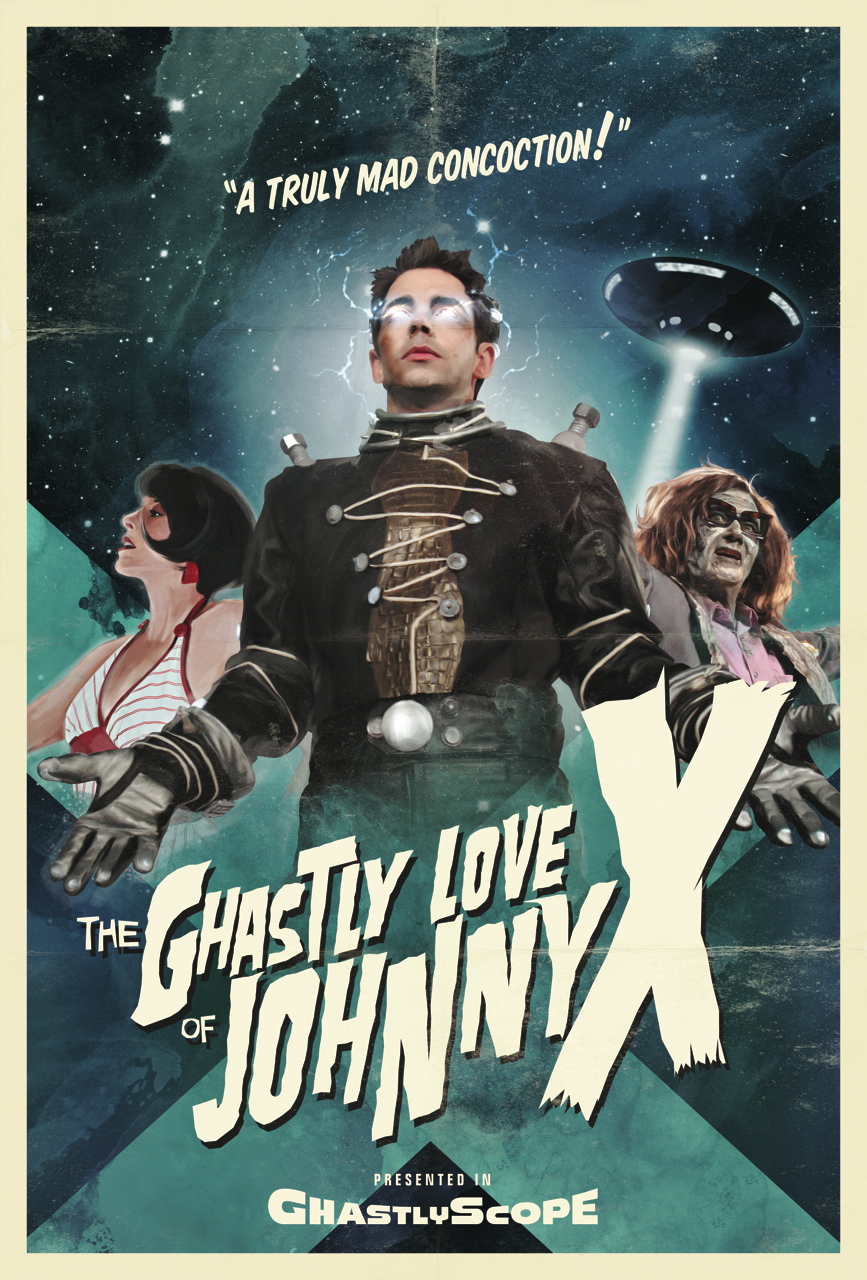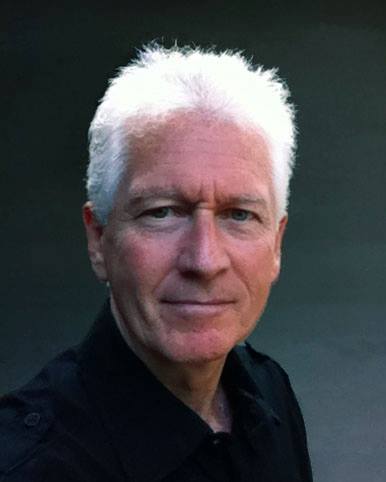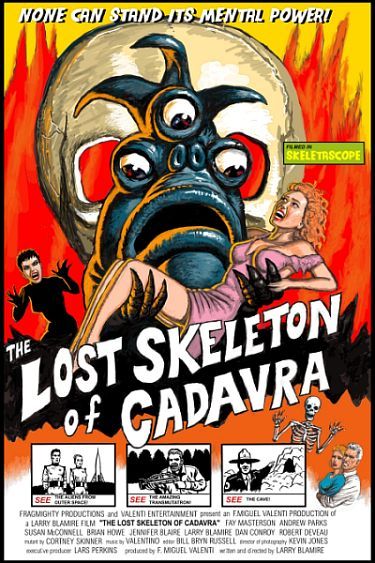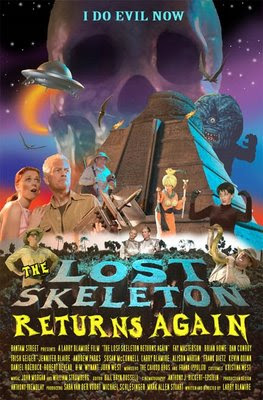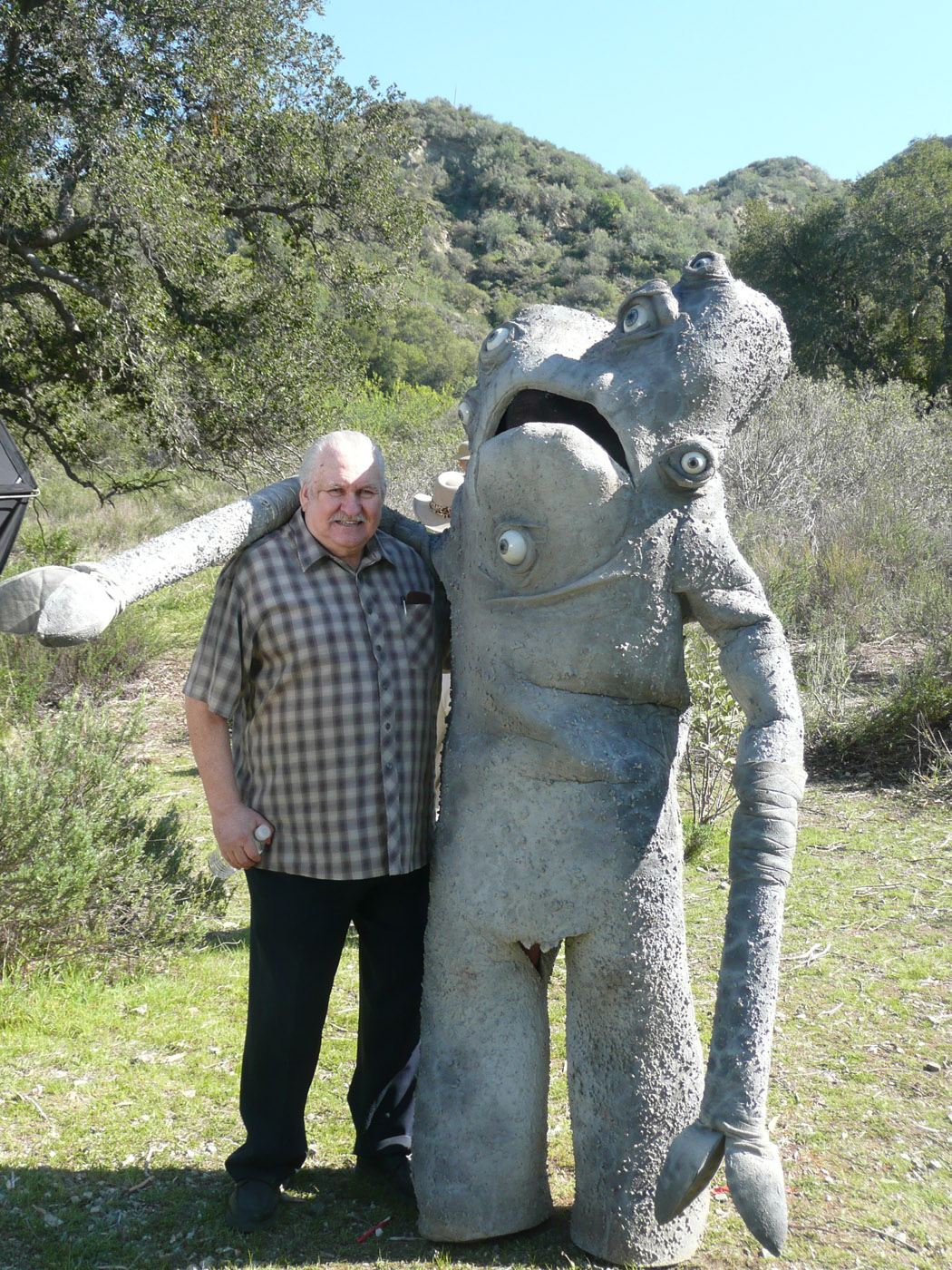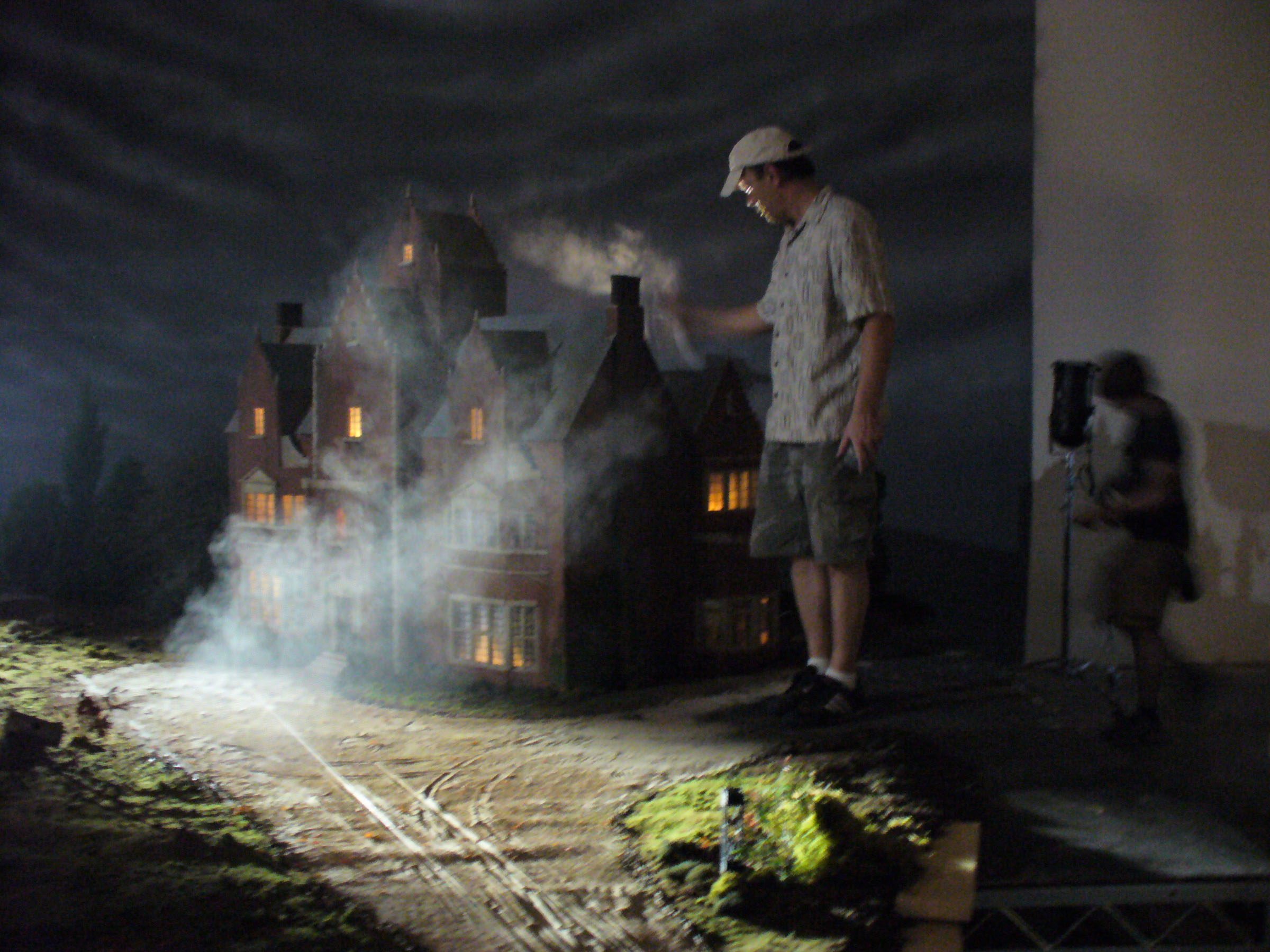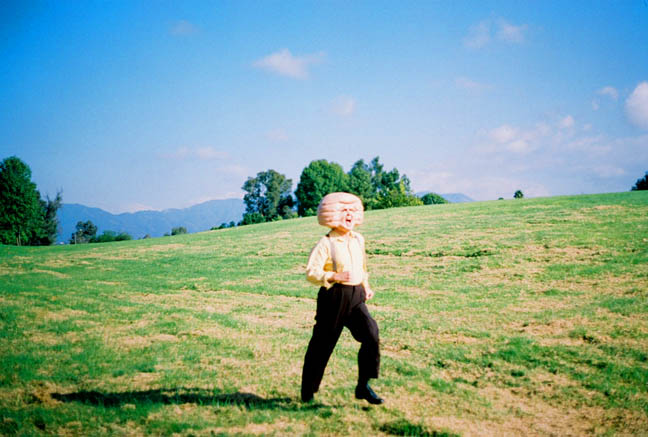I know I’ll get some complaints here. “Hey, you just did a blog about that Blamire guy! Do something else!” Well, I haven’t sold my soul to Larry Blamire or to Paul Bunnell. I promise that I’ll write blogs about other topics at some point. Right now, I’m deep into the National Film Preservation Foundation restoration of King of the Kongo, so when someone tells me that I can get a new article, that I don’t have to do anything, and that it has to do with film and history, well I have to post it.
And besides, Paul and Larry are making films that I particularly enjoy, and Paul even sees the light about real film. (Larry, not so much, but we’ll work on him!)
Paul’s film The Ghastly Love of Johnny X is one of those independents that was shot with love as a tribute to the films of the past. I particularly enjoy Paul’s description of Kevin McCarthy. The more I hear about Kevin, the more I regret that I never got the chance to meet him. He sounds like a really amazing guy.
And, while I’m on the topic, Larry Blamire’s Kickstarter project to fund The Lost Skeleton Walks Among Us is winding down.
So, while I’m on enforced hiatus from the Dr. Film blog, here is an interview with filmmaker Paul Bunnell by filmmaker Larry Blamire. Can you get any cooler?
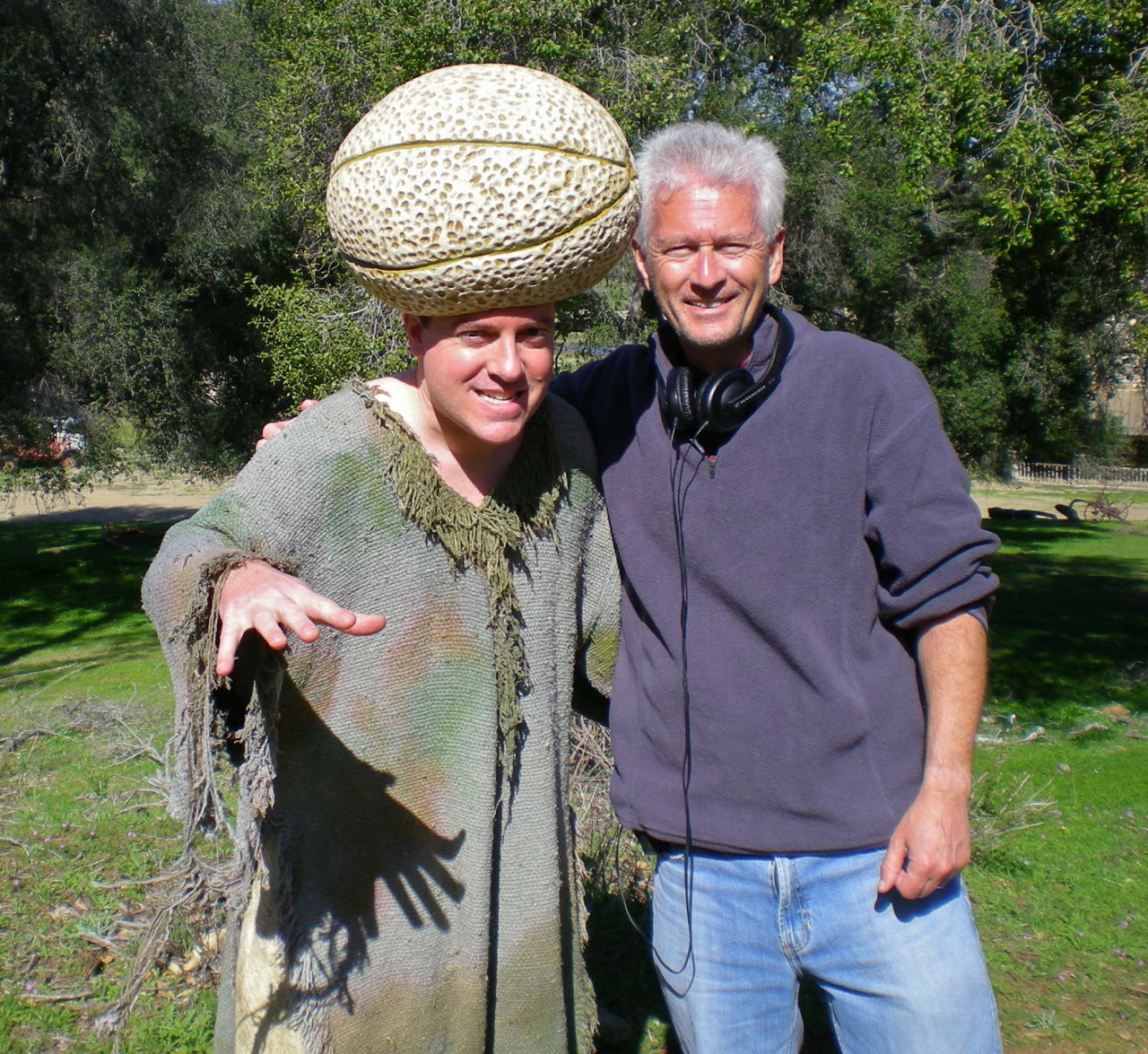
LARRY: Paul, The Ghastly Love of Johnny X is such a refreshing blast of entertaining individuality. Can you recall a singular moment in time when the idea for it was born? Or was it a gradual birth, like a kind of slow mental ooze that happened while you slept?
PAUL: There was not a singular moment in time the idea was born, although that would have been wonderful! It wasn’t a slow mental ooze, either, and to be honest, thinking about it probably disrupted my sleep. It was more like a caterpillar, in that the basic idea came to me, not fully formed, but inspiring enough that I started filming. Then, as you know, production went into a sort of stasis, or cocoon, to follow my metaphor, during which changes were made to the style and the story. Finally, quite a bit later, the finished film emerged as a beautiful, wacky, black and white butterfly, still bearing a resemblance to its beginnings, but quite different from the original concept!
LARRY: Are you concerned about the current glut of Dark Comic Sci-fi Musical Romances?
PAUL: Actually, I’d be thrilled to see many, many more Dark Comic Sci-fi Musical Romances. The world could always use more entertainment, and GLJX, of course, is ready, willing and able to lead the way!
LARRY: The film seems to take place in an alternate reality 50s, yet it’s very consistent that way. How did you describe its world to your cast, designers, etc., without them doubting your sanity?
PAUL: There was never any question; my sanity was doubted since day one. I had very specific ideas for sets and props and wanted to give the film an artificial studio look without being condescending or cheesy. One of the things I wanted to replicate were the craggy exterior sets from Bride of Frankenstein. I told my production designer: “You can mess up the other sets, but no matter what, get this one right!” It was a challenge to achieve the desired effect for the money we had to work with, but Lawrence Kim figured it out and my hat will forever be off to him. By the way, where is my hat?
LARRY: Talk about your casting process; any cattle calls? Mostly folks you already knew? [Ed. Note: In show business parlance, a cattle call is “a theatrical audition at which many performers are seen only briefly, often in groups.” Just in case you didn’t know.]
PAUL: Some I knew, some I didn’t. I discovered one of the gang girls working at a coffee shop. She was this striking beauty with classic features. I told her about my upcoming movie AND that I was married. I didn’t get a date, but she did happen to call me about a year later when I was casting and I gave her the role of “Annette.” I discovered another Ghastly One at a nightclub in Los Angeles; Morris Everett was the real rockabilly deal, complete with tattoos and a zany personality, so he got the part. Finally there was a very good friend of mine, David Slaughter, a fellow film aficionado who was rather critical of my movie That Little Monster. I put him in GLJX so he would have a birds-eye view of the struggles it took to make a movie. To this day he has never negatively criticized GLJX. Everyone else auditioned for their roles through the casting call process, except for Mr. Projector (Aaron Ball), who will always be invited to appear in every movie I make.
LARRY: Creed Bratton is particularly terrific–how did he become involved?
PAUL: It’s a funny thing to admit, but I had no idea who Creed Bratton was before I cast him. I was trying to get my friend George Chakiris (yes THAT George Chakiris from West Side Story) to play Mickey O’Flynn. He was on the fence about it. I then met Paul (Phantom of the Paradise) Williams and decided he would be absolutely perfect to play Mickey – and after a couple of meetings he said YES! Four years later when I finally got the money to finish shooting, I contacted Paul but couldn’t get his schedule to correlate with ours. I went to my casting director for ideas. She put out a notice and received hundreds of submissions, one of which kept finding its way to my attention. That “one” was Creed Bratton. His agent mentioned The Grass Roots and that he was the real deal from the sixties and so on. I decided to meet with him to discuss the role. During the meeting I mentioned I didn’t own a cell phone. Creed immediately took his phone out of his pocket and threw it into a nearby tree. I knew at that moment he was going to play Mickey O’Flynn. Happily, Paul Williams was able to give us one day and agreed to play the talk show host. His scene was shot on the first day, which also happened to be Creed’s first day. At the end of the day Paul took me aside and complimented me for casting Creed, saying how perfect he was for the part. I had to admit he was right.
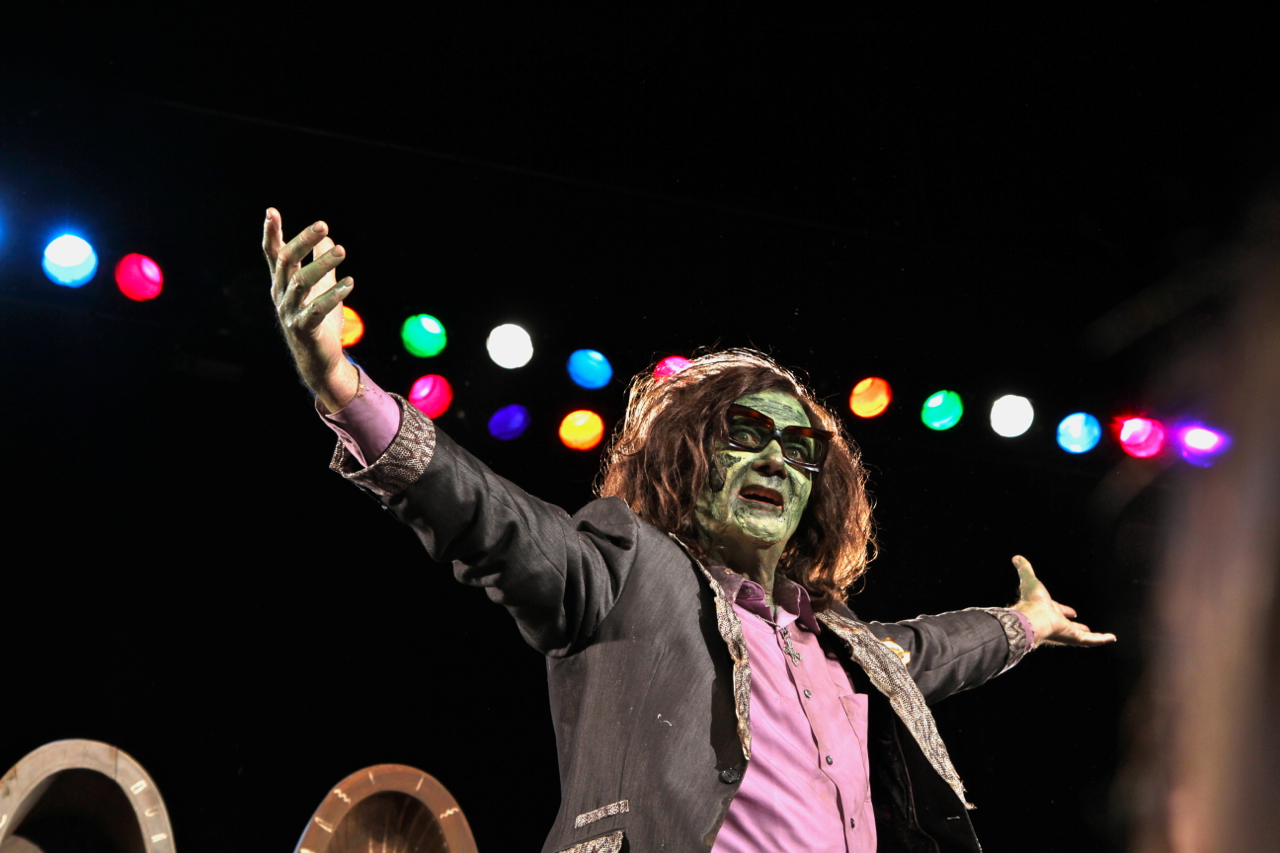
LARRY: We’ve each had the pleasure of directing the wonderful Kevin McCarthy. Was he just as quiet and reserved on your set?
PAUL: No. He was actually quite feisty… in a good way.
LARRY: Okay, I was kidding right. He was wonderfully insane on our set.
PAUL: That’s true .. and I had the pleasure to witness the insanity when you filmed his cameo in Trail of the Screaming Forehead. What a fun day that was! When Kevin came to film his role in GLJX I was a bundle of nerves. I just wanted to please him, but everything seemed to go wrong that day. The 35mm camera stopped working and we had to send out for a replacement; this shut us down for a few hours. Kevin kept suggesting changes in the script. One thing he didn’t like was revealing the resurrection suit at the beginning of the movie. He also re-wrote some of his dialogue, which I happily approved. Oh, and that wonderful hat! Kevin thought it would be a good idea for his character to have some kind of a hat and I agreed. A week later I received a magazine clipping in the mail. It was a caricature of the rock band DEVO wearing their signature hats. Kevin drew an arrow to the hats and wrote: “These look interesting.” I thought it was very funny since I was sure he had no idea who DEVO was. The idea was so inspired that our costume designer (Kristina West) created a modified DEVO hat for his character. All thanks to Kevin!
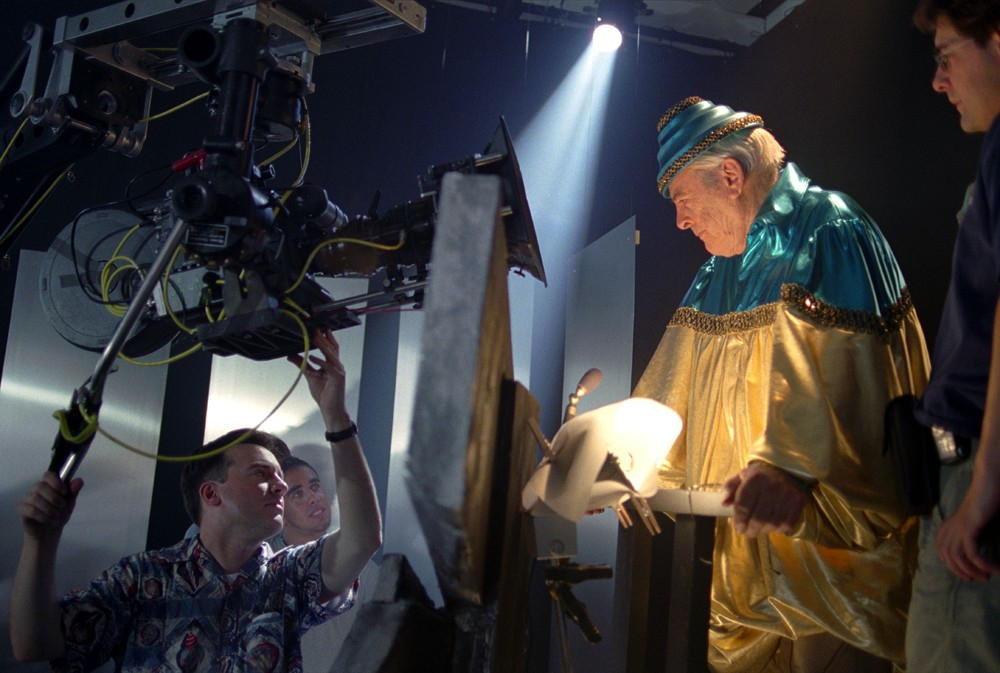
LARRY: Kate Maberly’s delightfully wacky in this. Can I say “delightfully wacky”?
PAUL: You bet! Any actress from the UK who can play an American valley girl is the mutt’s nuts — that’s British slang for “delightfully wacky.”
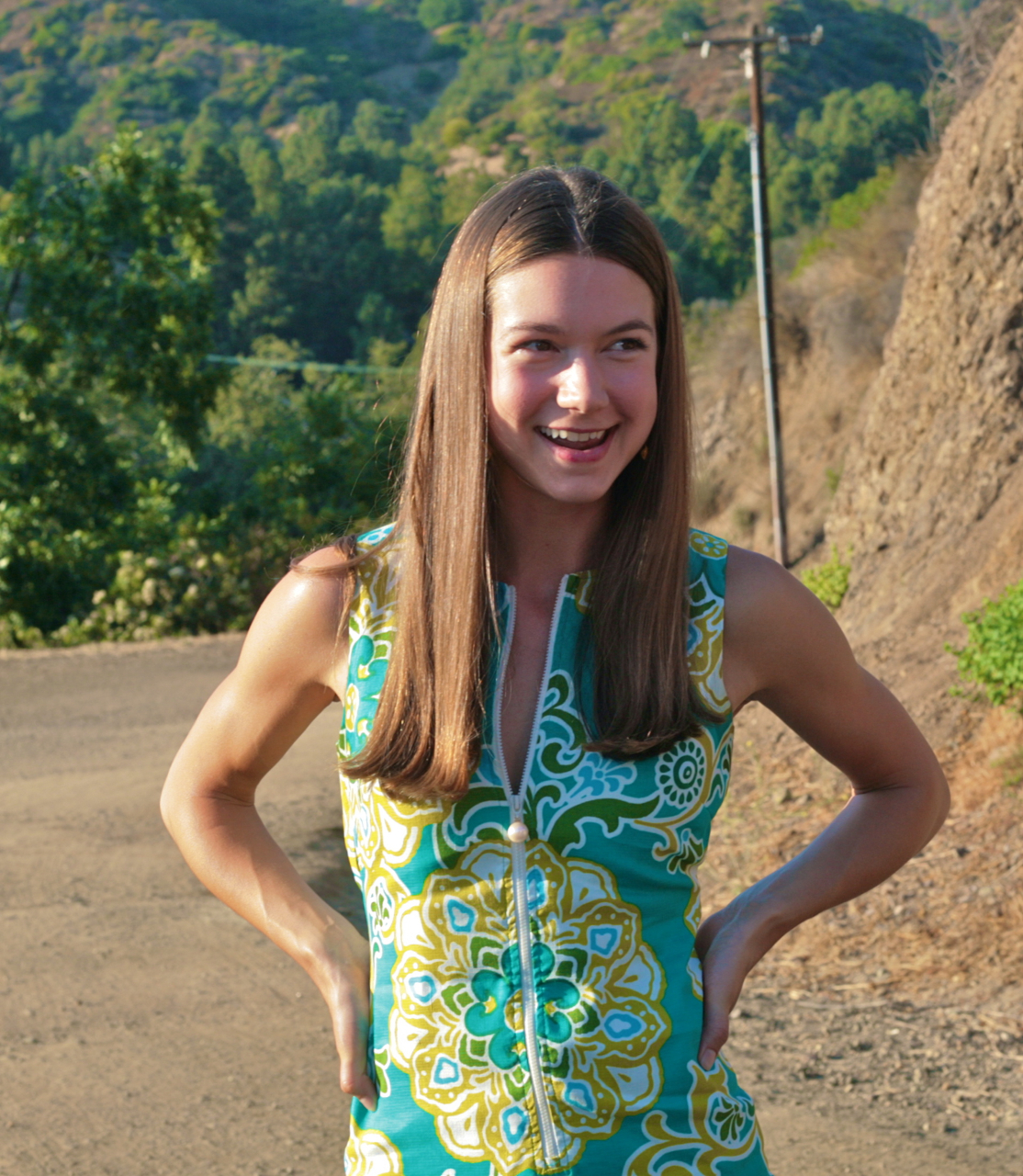
LARRY: How tight were you to the script? Any improv?
PAUL: Occasionally I would call out “Start Acting” instead of “Action”.. but for the most part we stuck to the script. The only time we veered was when Creed Bratton or Paul Williams was on set. They came up with quite a few zingers, most of which made it into the final cut.
LARRY: Paul Bunnell: fun to work with? Or Fritz Langian nightmare?
PAUL: I always try to keep my sets fun and positive. There was only one “incident” where I lost it with a pushy Assistant Director. I guess he didn’t understand my Langian working method.
LARRY: Did your concept of the film shift at all over the period of making it?
PAUL: Somewhat. The script was heavily revised and re-written during our six year “hiatus”. In the original story there were two concerts and Mickey O’Flynn was the villain. This changed and Mickey became more fun loving and cartoon-like. I then added the delightfully wacky Dandi Conners character and the big set piece at the end. A major change was the musical aspect itself. Originally GLJX was NOT a musical – not until I brought Scott Martin on board to write some songs for Mickey O’Flynn. I liked them so much that I decided to add a full blown musical number in the diner. That one turned out so well that I decided to add more songs while waiting for our money. If it wasn’t for the six year break there would only be a couple of songs in the movie – and if it took any longer we might have had more songs (or no movie at all).
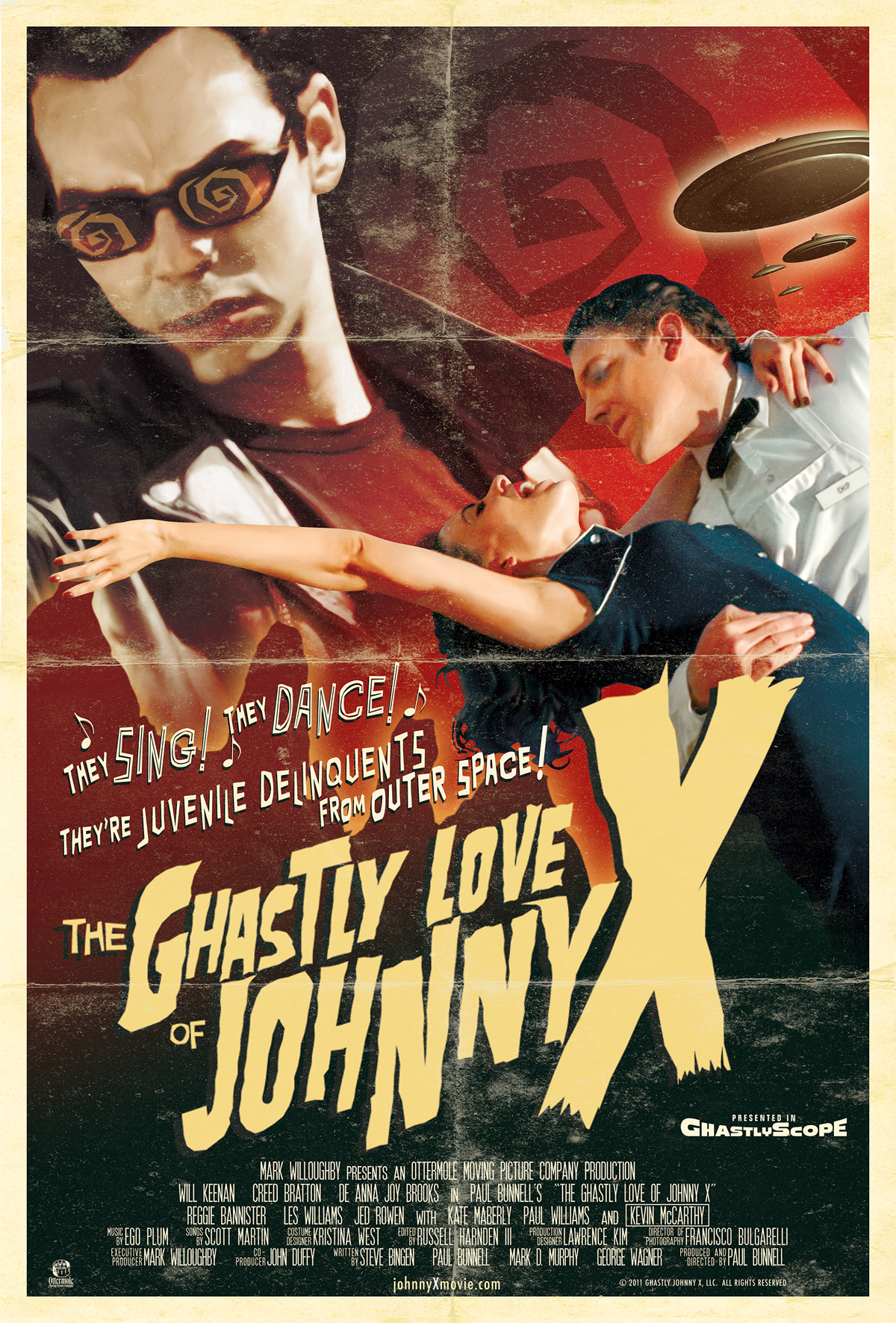 LARRY: I know you’re passionate about shooting on film–and it looks gorgeous–can you see any circumstance where you would try HD? (come to the dark side, Paul… come to the dark side…)
LARRY: I know you’re passionate about shooting on film–and it looks gorgeous–can you see any circumstance where you would try HD? (come to the dark side, Paul… come to the dark side…)
PAUL: I believe that film is still the best way to capture the image. I finished GLJX without using a digital intermediate and made a few 35mm release prints from the original camera negative. I also made a beautiful 2K DCP (Digital Cinema Package) version of the movie. Both versions are beautiful to watch. If you don’t have a skilled 35mm projectionist there is always a chance something could go wrong with the presentation (missed changeover cues, focus issues, etc.). But with digital projection there is a controlled presentation every time which reduces the odds of something going wrong. So for today’s modern audiences I would prefer to have it seen digitally in a theatre, but for myself, I prefer the look of the 35mm print.
LARRY: How did you get the last of the Eastman Plus-X Negative Film? Burglary?
PAUL: I started filming 2nd unit stuff for GLJX in November 2002 on Kodak 35mm Plus-X black-and-white film stock and continued with it in 2004 when the actors came on board. Then there was the long break between filming and a lot was changing in the industry during that time. When we finally got the money to finish in 2010 I heard that Kodak had just discontinued their Plus-X stock. Luckily there was a small amount of Plus-X in various Kodak facilities, but it was going fast. It seemed that every filmmaker was buying up whatever they could get their hands on. My sales agent pulled some strings and got us just enough to finish the movie with some rolls coming as far away as France. So that’s how GLJX became the last 35mm feature film shot entirely on Plus-X.
LARRY: Were you a monsterkid? Come on, ‘fess.
PAUL: I used to watch all the classic monster movies every weekend on “Fright Night with Seymour” .. so I guess you could call me a bonafide monsterkid.
LARRY: What was the first movie monster that ever scared you?
PAUL: For some reason I remember being creeped out by War of the Gargantuas. By the time I got a color TV set I was over it .. but that wasn’t until I was 40.
LARRY: Off the top of your head, give me five films that influenced or affected you greatly, but not in alphabetical order?
PAUL: How about in year of release order: Charlie Chaplin’s City Lights (1931); James Whale’s Bride of Frankenstein (1935); Walt Disney’s Snow White and the Seven Dwarfs (1937); Alfred Hitchcock’s Vertigo (1958); and Stanley Kramer’s It’s a Mad, Mad, Mad, Mad World (1963).
LARRY: Who’s your favorite painter?
PAUL: Earl Scheib (he painted cars when I was a kid).
LARRY: Did you make home movies as a kid?
PAUL: Yes. I made my first one in 1974 on super 8mm film with no sound. My first “talkie” was a year later in which I played the role of “Count Dracula”. I followed it up with “Bite of the Werewolf” featuring a classic Don Post mask. I made a total of 22 films during the 1970s-1990s
LARRY: Loved the talk show scene; a good example of the film’s High Strangeness. Is surreality a goal of yours? Or do I just see what I want to see?
PAUL: I love the surreal. The sound designer had all this canned laughter and applause that sounded like it was coming from a huge studio audience. I decided it was way too much and dialed it back to almost nothing. I wanted to give the scene a feeling of awkwardness. I wanted the sound of the actual audience watching GLJX to be the laugh track. It was probably a risky choice, but I think it works and helps give the scene a High Strangeness feel.
LARRY: The score is fantastic. Nice to see the Moon-Rays involved. Tell us about Ego Plum and Scott Martin.
PAUL: Ego Plum and Scott Martin are a couple of multi-talented musicians whose work compliments each other nicely. Scott is a classically trained composer who writes his score on paper, like Amadeus did back in the day. He rehearsed the singing parts at his house and was present for all the recording sessions. He really is quite brilliant. Ego Plum is one of those self-taught musicians with a great ear for arranging and composing music, although I’m not sure about his other ear. He orchestrated and performed the music for Scott’s songs, which gave them a unique sound. He also composed the film score which took several months to complete. I was usually there for the sessions and helped out with bongos, phone books and bicycle tires. The Moon-Rays title track is a delight and pretty much encompasses all things musically ghastly, but in a good way.
LARRY: The production numbers are ambitious and very nicely done. Nightmare to stage or Fun Time; you decide!
PAUL: I usually had a vague idea for staging but wasn’t completely sure until I surveyed the set. I would walk around the sound stage with headphones and listen to the songs before filming. The choreography was worked out well in advance with ample rehearsal time. For the numbers I worked with choreographer Carolanne Marano and let her co-direct with me. This method worked really well and I think the quality shows on the screen.
LARRY: I remember seeing That Little Monster first listed in the Sinister Cinema catalogue and being intrigued. Talk a little about how that film came about.
PAUL: I wrote a script for the television show Monsters with high hopes of getting my directing career started. I met with producers but there was little interest so I decided to make it myself. TLM turned out to be more of an experimental art film with an appearance by Forrest J Ackerman at the beginning and a cameo (his very last) by Bob Hope at the end. I never got directing work based on its odd nature but the Sinister Cinema and Elite Entertainment releases did get me some much needed press. It was then I decided to make GLJX. Like TLM I decided to shoot mostly on weekends. This went on for five months until the money ran out. I was just about to give up after trying unsuccessfully for six years to raise finishing funds when in the eleventh hour a former grip on TLM (and good friend) Mark Willoughby came to my rescue! He financed GLJX and was quite pleased with his promotion to Executive Producer. Who would have thunk it?
LARRY: Radiator girl from Eraserhead? True or false?
PAUL: False. She is actually known as “Lady in the Radiator”.. but if you’re referring to De Anna Joy Brooks’ expanded cheeks makeup in GLJX, this was not inspired by Radiator girl.
LARRY: What are distribution plans?
PAUL: We had a small theatrical release and quickly became known as the lowest grossing film of 2012. Strand Releasing became our official distributor in 2013 and released a beautiful DVD edition, chock full of exclusive bonus features. Also, GLJX is currently available to stream on Netflix.
LARRY: Can you give us any clues about what’s next for you? Already working on other projects?
PAUL: My next movie is called Rocket Girl; about a young girl’s adventure on Earth in the futuristic year of 1967. There’s also a bio-pic about 1960’s pop icon Tiny Tim. But the one I’m really itchin’ to do is a reimagining of Victor Hugo’s The Man Who Laughs.
[Ed. Note: It’s interesting to hear these guys gush on about The Man Who Laughs. I was a contributor to the Kino DVD of that film.]
LARRY: Okay, that is way cool. One of the first movie monster paintings I ever did was one of (yeah, I know he’s not really a monster) Conrad Veidt’s startling images from the 1928 film. Not to give too much away, but would it be a period piece?
PAUL: My version of The Man Who Laughs will be reimagined to take place in a 1930s mythological setting; more of a fantasy driven fairy tale than an authentic period piece.
LARRY: Sounds like another piece of unique entertainment from the mysterious mind of Paul Bunnell! Thank you very much for the interview, Paul. This has been perfectly ghastly, but – as you say – in a good way!
Just in case you missed all the hyperlinks, you can read more about Paul Bunnell’s Ghastly Love of Johnny X here.
Larry Blamire is trying to fund his next movie, The Lost Skeleton Walks Among Us here.
And, if you’re a first time reader, this blog is promoting a classic film TV show that I’ve been trying to launch for years. It’s here.

